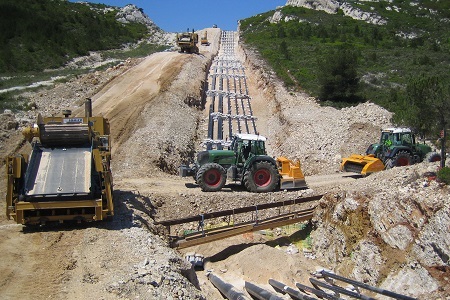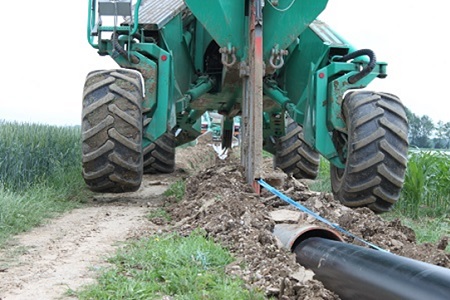Pipe-laying methods
Pipes from Mannesmann Line Pipe can be laid using a variety of methods. Depending on the method, we use Materials and Coatings that possess the necessary fracture resistance and shear strength.
Open-trench pipe-laying

Suitable for all pipe diameters, open-trench pipe-laying is the most common method.
To start with, a trench is excavated along the planned pipeline route. If the in-situ soil does not offer a suitable pipe bed, the trench is deepened and bedded. The pipes can then be lowered into the trench as a welded pipe string.
Plowing

Plowing is a particularly eco-friendly technique, which can be used for pipes up to DN 600, depending on the type of soil, pipe string length and pulling force involved.
By means of a steel rope winch, a special tractor pulls the pipe-laying plow through the soil. The share, which is adjusted to the pipe-laying level plows a furrow into the soil through which the pipe string is pulled in. The displaced soil immediately deposits itself on the pipe string. This makes the process particularly fast, while reducing the impact on the land to an absolute minimum.
Horizontal flush drilling

The horizontal flush drilling technique is used in trenchless pipeline construction and is particularly suitable for pipe-laying in densely built-up urban areas or for crossings underneath water or buildings. The pilot hole is drilled along a two- or three-dimensionally curved line between the entry point (in front of the drill) and an exit point (on the opposite side of the obstacle to be crossed under). The in-situ soil is loosened by a drill head at the front end of the drill string. In the second step in controlled horizontal drilling, the pilot hole is widened. Finally, the pipe string is pulled in from the exit point into the widened borehole.

